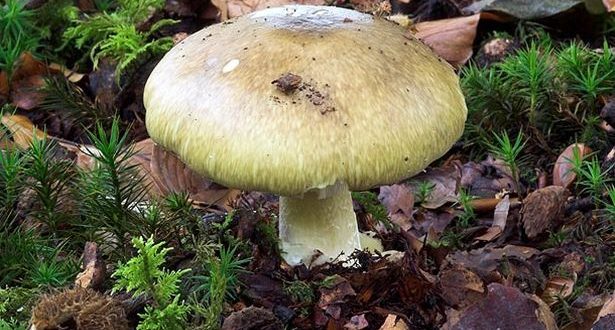A young boy has died after ingesting a poisonous mushroom.
The family was walking along downtown when they spotted some mushrooms growing in a garden. They then proceeded to take them home where the youngster, a 3-year-old boy, consumed them before falling ill and eventually dying.
Specimens collected at the site in which the family was foraging suggests the boy ingested an Amanita phalloides mushroom, also known as the “death cap” mushroom. However, tests are still ongoing.
The death cap mushroom likely kills and poisons more people every year than any other mushroom. Now there finally appears to be an effective treatment—but few doctors know about it.
What are the symptoms?
The symptoms are slow to show themselves and often do not appear until 10-16 hours (or even longer) after eating.
The timing given above is approximate, for much depends on the general health of the individual and how much they’ve eaten. For example, if you’ve eaten a large meal of Deathcaps the symptoms could start as early as 6 hours after the meal.
The first symptoms are stomach pains, vomiting and diarrhoea. These may continue for a day or two, after which there is typically an easing of symptoms and apparent recovery. The “recovery” period may last for 2 or 3 days. Then the terminal phase of 3-5 days starts with the re-occurrence of stomach pains, vomiting and diarrhoea – accompanied by jaundice. Without effective, early medical intervention, coma and death occur between one and two weeks after eating the mushroom. Death is caused by liver failure, often accompanied by kidney failure.
What does it look like?
Cap: The young caps are close to hemispherical in shape but then flatten as they expand. When fully open they are gently curved and smooth. The colour is usually yellowish green, but may sometimes be olive to light brown. The fully open caps are commonly 10-15 centimetres in diameter. However, you can find fully mature Deathcaps with caps under 10 centimetres across, occasionally even as little as 5 centimetres. Much depends on what the weather has been doing. The cap is slightly sticky in wet weather but dry and shiny in dry weather.
Gills: White. The gills don’t reach the stem, but come close.
Stem: The stem is white and from 5 to 15 centimetres long and 1 to 2 centimetres in diameter. The base of the stem is bulbous (up to 4 centimetres in diameter) and is contained within a cup-like structure (called a volva). Sometimes the bulbous base and the volva will be partially buried in the soil or hidden by grasses and leaf litter. Occasionally the volva is poorly developed.
How dangerous is the Deathcap?
Deadly! The poisons in one cap are enough to kill a healthy adult and less will be enough to kill a small child.
What should I do if I’ve eaten one?
Go to a hospital immediately. If possible, take a sample of your mushroom with you.
Agencies/Canadajournal
 Canada Journal – News of the World Articles and videos to bring you the biggest Canadian news stories from across the country every day
Canada Journal – News of the World Articles and videos to bring you the biggest Canadian news stories from across the country every day



